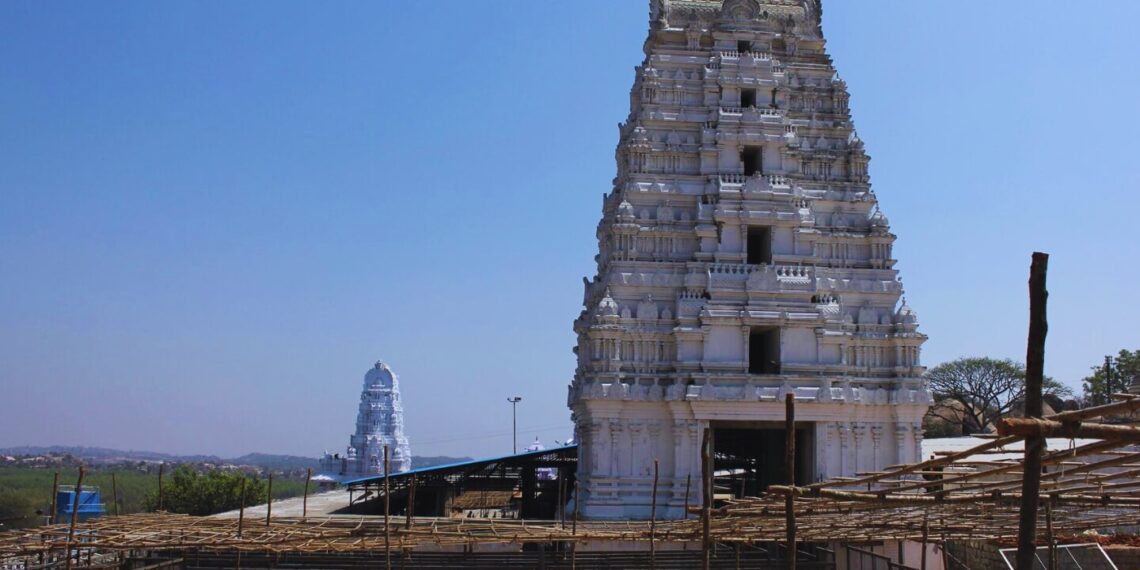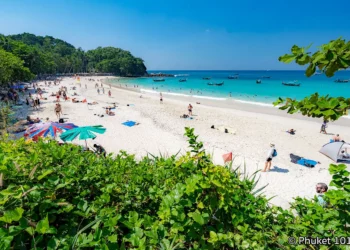The Keesaragutta Temple, perched on a rocky hill in Keesara, Hyderabad, Telangana, is a famous Hindu temple dedicated to Lord Rama, the seventh avatar of Lord Vishnu. Set amidst the rural outskirts, it’s famed for its serene vibe and ancient Shiva lingams dotting the hill.
Historical Overview
The temple is very old reaching back to the 4th century CE, during the Vishnukundin dynasty’s sway, though it could be older. Keesara, a quiet village 35 km from Hyderabad, was a spiritual spot. Old texts and local talk credit King Vishnukundin with starting the temple after finding self-manifested Shiva lingams on the hill. The Rama shrine grew under the Kakatiyas in the 1200s, who added structures.
The temple was destroyed in the 1300s byTughlaq invasions, but devotees hid the Rama idol in a hill cave to keep it safe. The temple was rebuilt in the 1700s with help from local chieftains. In the 1990s, the Endowments Department spruced it up, keeping its old charm. Today, it stands as a beacon of strong faith, drawing devotees and wanderers.
Mythological Importance
The temple is for Lord Rama, believed to grant devotion and blessings. His idol, carved from black stone, shows him with Sita, Lakshmana, and Hanuman, standing for virtue and loyalty. The hill’s 108 Shiva lingams, said to be divine, add a mystic air, tying it to Shiva worship. A local myth tells of a sage, Keesara, who meditated here and saw Rama in a dream. The deity blessed the hill, leaving the lingams as his mark. Another tale links the site to the Ramayana, claiming Rama rested here during his exile.
Temple Structure and Design
The Keesaragutta Temple in Hyderabad, Telangana, is crafted in a South Indian Dravidian style, bearing the ancient marks of Vishnukundin artistry, blending devotion with the hill’s stark beauty. The gopuram, restored in 1995, stands proud with stone carvings of Lord Rama in his warrior pose, Lord Shiva with his trident, and scenes of celestial musicians framed by lotus and vine patterns. Painted in soft cream and red, it’s capped with a simple kalasa that catches the morning light. The sanctum houses black-stone idols of Rama, Sita, Lakshmana, and Hanuman, draped in gold cloth and fresh garlands, set beneath a white-painted vimana, its stepped roof symbolizing purity. The sanctum’s walls, smoothed by time, carry faint Vishnukundin-era etchings of Rama’s exile, glowing under oil lamps.
Small shrines for Shiva, Ganesha, and Anjaneya (Hanuman) are scattered across the hill, each carved from local granite and sheltered by open stone canopies. The Shiva shrine, near the lingams, holds a small lingam, its base etched with snake motifs. The Ganesha shrine, by the entrance, shows a plump idol with a broken tusk, inviting prayers for success. The Anjaneya shrine, facing Rama, depicts Hanuman kneeling, his hands folded in devotion. These shrines, though modest, tie the temple’s worship together, offering varied paths to faith.
Perched on Keesaragutta hill, the temple is reached by 200 rugged stone steps, worn by pilgrims’ feet over centuries. The steps wind past 108 ancient Shiva lingams, said to be self-formed, scattered among rocks and shrubs. Some lingams are tucked in crevices, others stand open, their surfaces smoothed by rain and prayers. The hilltop courtyard, paved with uneven granite, feels open yet sacred, fringed by neem and banyan trees that cast dappled shade. A small stone tank, fed by a trickle from the hill, is used for ritual dips, its edges carved with fish shapes, a Vishnukundin touch. The temple’s low walls, built from rough stone, have niches for minor deities like Naga figures, believed to protect the grounds.
Carvings on pillars and walls tell Rama’s tales—his bow-breaking, forest exile, and battle with Ravana—etched with care to guide devotees. The temple’s build centers on worship, with every rock and carving pointing to Rama’s grace. The 1995 fixes added sturdy paths but kept the hill’s wild, holy spirit, making it a quiet spot for prayer and peace.
Rituals and Festivals
The temple celebrates festivals dedicated to the deity. Among them, Sri Rama Navami in March or April is the grandest, marking Rama’s birth, with Sita Rama Kalyanam (wedding ritual) and marches. Maha Shivaratri in February or March has homams (fire rituals) and lingam worship. Karthika Masam in October or November sees lamp-lighting by the lingams.
Daily worship covers Suprabhata Seva (morning prayers), Archana (offerings), and Deeparadhana (lamp ritual). Services like Abhishekam and Rama Tarakam can be booked at the temple office. A prasad stall gives free coconut sweets for devotees. Tulasi Archana, giving basil leaves on Fridays, is for clear minds.
Information for Travelers
Hours and Entry: Open daily, 6:00 AM to 1:00 PM, then 3:00 PM to 8:00 PM. Entry is free, but rituals cost a bit.
Clothing: Wear simple clothes. Men doing rituals wear dhotis and go bare-chested, as is custom.
How to Get There:
Air: Hyderabad’s Rajiv Gandhi Airport, 40 km away, is nearest. Buses or taxis hit Keesara.
Train: Secunderabad Railway Station, 30 km off, links to Hyderabad and big towns.
Road: Keesara’s 35 km from Hyderabad. Buses go often from Hyderabad’s Uppal.
Places to Stay: Hyderabad, 35 km away, has plain guesthouses. Keesara has no hotels; day trips are common. Stalls by the temple sell dosa, vada, and tea.
Best Time to Visit: October to March has good weather. Weekdays are calm. Godavari Pushkaralu, every 12 years, packs crowds—next in 2027.











